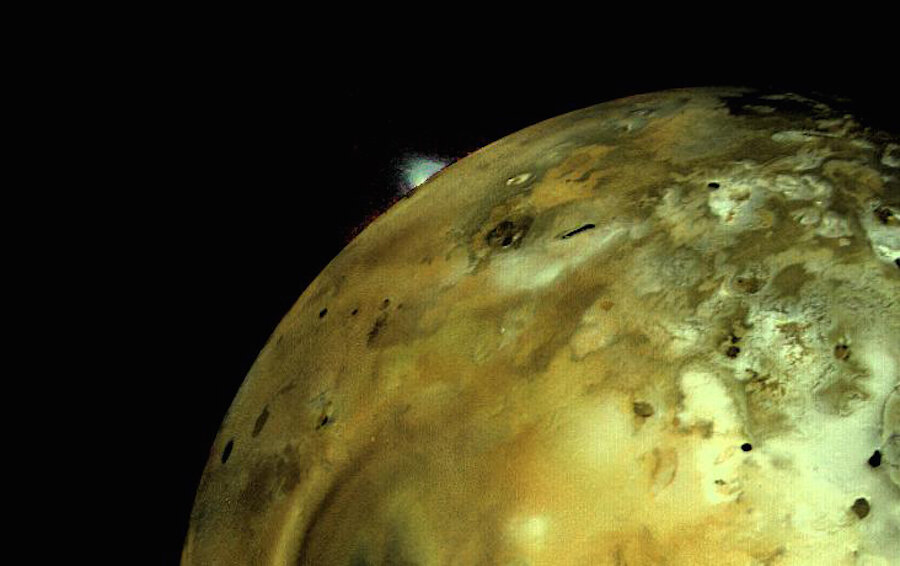How volcanoes moved mountains on Jupiter's moon Io
Loading...
Jupiter's moon Io is best known for two features: an incredibly high level of volcanic activity and incredibly high mountains. Answers about how or if the two are connected have eluded scientists for decades.
Now, a recent report from researchers from Washington University in St. Louis could provide a clearer view of the connection. The report, published Monday in the journal Nature, confirms that the mountains are a product of volcanic activity and shows the process behind the formation is unlike anything found on Earth, but not as alien as scientists expected.
"People suspected the two were related," lead author Michael T. Bland, a research scientist at Washington University in St. Louis and at the US Geological Survey, says in a phone interview with The Christian Science Monitor. "They hypothesized these mountains form by press faulting, basically blocks of Io's crust uplifting ... but it's hard to demonstrate that."
Scientists first began exploring the puzzle of Io's mountains during the Galileo mission period that provided the first recorded observations on what was happening on the volcanic moon. The massive mountains appeared very different than the mountains on Earth, where tectonic mountains form in chains; Io's form in isolated blocks.
Previous studies focused on the morphology of the mountains, analyzing their shape in an attempt to understand how they had formed, but Dr. Bland and his co-author, Washington University professor William McKinnon, took a different approach.
Aided by more advanced computers, he was able to establish more sophisticated models to look at the mechanics behind the mountains, focusing on how the crust of Io behaves and how it breaks due to the volcanic stresses.
The models confirm the hypothesis that Io's giant mountains are a result of deep faults driven by volcanic activity. Essentially, as magma from Io's interior reaches the surface, the surface is forced downward, where it creates stressors deep into the crust. Eventually, with enough stress, parts of the crust are forced upward, creating the isolated mountains.
Io's process of forming mountains is completely different than what occurs on Earth and other planets in the Solar System, where mountains are caused by tectonic plates shifting.
But forming mountains are not the only purpose of tectonic plates. They act as a kind of top layer in a convection system that work alongside eruptions to help the Earth cool itself, Bland explained.
Io has a different system of cooling itself. Magma travels upward to the surface, cools and then gets subsided back down to the warming interior. No tectonic plates are required. But Io's method has a downside – the deep stresses caused by the process can actually limit the path to the surface for magma.
So how does the process work even with such large stress blocking magma flow?
"The mountains reduces these stresses and allows the magma to more easily be transported from the crust," Bland said. "That's the big result."
The findings demonstrate that rather than being just a product of volcanic activity, as previous hypotheses thought, the mountains are actually a key part of the volcanic cooling process for the world. As they form they relieve the stress in the area allowing magma to flow. The results are an eye-opening find for scientists.
"If we didn't see it on Io we wouldn’t believe those things could happen elsewhere," Bland said. By studying the solar system "you see there are other ways plants can operate. There are a lot of exoplanets that are being discovered, these kind of processes can be happening out there as well."








